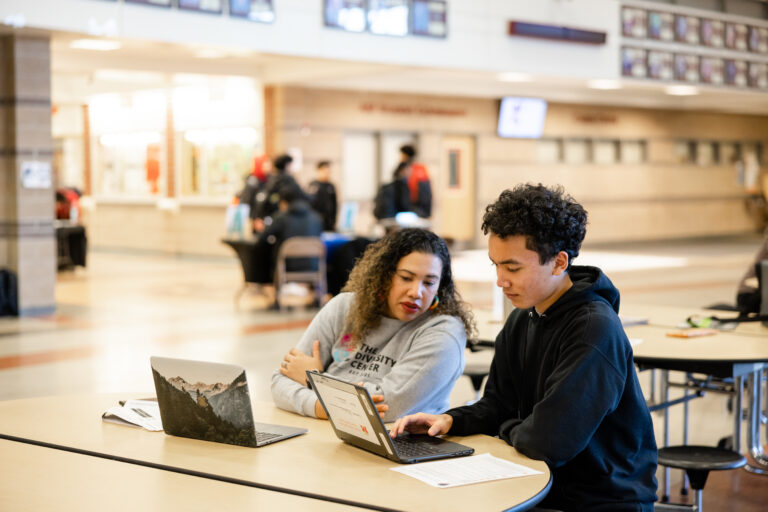
Ben Mitchell
Director of Advocacy & Policy, Foundation for Tacoma Students
Maybe the biggest challenge with education policy is that the field is littered with all sorts of great ideas that work at a small-ish scale, but then aren’t as effective when we try to take them to a wide scale. It just shows that getting education policy right is difficult and that the work is never done because conditions change all the time.
And so given that making good education policy is so hard, and that it needs constant tending, it’s important to have high-quality empirical research to help inform lawmakers, officials and advocates. And the good news is that there’s great research happening all the time, and as a data-driven organization we lean on this work at FFTS in our policy efforts.
But there are also always new opportunities coming up for education policy research, and the pandemic era in particular is rich with learning opportunities. There were so many different things done and tried in the education system in 2020-22, and now that that phase is behind us we have a chance to look back, try to objectively learn from the experience, and shed new light on important education policy questions.
I’ll describe here two research opportunities that we have in Washington where there is a fairly straightforward empirical project. One is around teacher licensure requirements, and the other is about high school graduation requirements. For each topic that follows I’ll briefly cover: what happened during COVID; the research opportunity; why it matters, and; recommend further reading on the issue.
How well do teacher certification requirements promote a diverse and highly skilled teacher workforce?
What happened
When the pandemic hit, the normal process for training and certifying new K-12 teachers was completely disrupted. In response to this, the Professional Educator Standards Board – which is the state body that oversees Washington’s teacher preparation and certification systems – created emergency rules that offered flexibility for earning a teaching certificate in two key ways:
- Teacher candidates could get a waiver for the required teacher licensure test
- Teacher candidates could be allowed to reduce the length of their student teaching requirement, or could be granted a waiver altogether
The research opportunity
Almost four years later there are some number of teachers out there in our state who took advantage of the emergency teacher certificate; and who have now been in the profession long enough where we could look at how effective they are as educators. A quality research effort could compare the effectiveness of these teachers to those who have completed the normal license test and student teaching requirements, and provide some new insight on how well Washington’s teacher training requirements are at actually developing good teachers.
Based on that research, policymakers might consider if all or any part of the emergency teacher certificate should be made permanent.
Why it matters
The question of how worthwhile state-level teacher training requirements are is already a research trend. Recent work out of Massachusetts and New Jersey implies pretty strongly that in those two states the teachers who were certified under COVID emergency rules do just as well as those who went through the standard training. Both studies also indicate that the emergency rules fostered a more diverse teacher cohort.
To quote the New Jersey study (bold added):
- “Relative to the novice teacher workforce before the pandemic, Temporary Certificate of Eligibility teachers were substantially more diverse without any significant effects on teacher performance or student test scores.”
The researchers in Massachusetts found that emergency licensed teachers (bold added):
- Have a “similar range and levels of effectiveness (as measured by educator evaluation scores and student growth percentiles)”
- Are “more racially/ethnically diverse” and “hired for ‘fit’ with local schools and students.”
What was done in Massachusetts and New Jersey, versus what was done in Washington is not apples to apples, and we should not assume that the research findings apply to our state. But that’s the reason we should do our own research on the impact of our emergency teacher certificate rules. It’s important to remember that the point of licensing requirements is to emphasize quality over quantity in our educator workforce. But if the current requirements don’t actually promote quality, and merely reduce the quantity of teachers – with a disproportionate impact on minority candidates – then we should reconsider our policies.
How flexible should we be with high school graduation requirements?
What happened
In 2021 the State Legislature gave school districts the authority to grant waivers to students for certain high school graduation requirements. The purpose of this was to prevent students from being unfairly impacted in their opportunity to meet all high school graduation requirements due to the COVID-19 pandemic. It was a reasonable thing to do given the huge disruptions to the availability of schooling.
The State Board of Education adopted rules for the program and it’s now known as the “Graduation Requirements Emergency Waiver Program.” Through the end of last school year the program allowed students to be granted waivers for up to two high school credits and our graduation pathway requirement. A research brief that looked at students from the class of 2022 showed that nearly 13% used a waiver and 8% specifically used the pathway waiver.
The research opportunity
There is more and more research being done that tries to get at the question of how well do different high school graduation requirements put students on a path for success after graduation. There are a lot of things to consider with research along these lines, and anyone who is doing this work will say that no single study or project will provide the answer.
That is all to say we want to be careful to not overstate the research opportunity that we have in Washington with our Emergency Waiver Program. But, there is a good opportunity to look at the post high school outcomes for the 13% of students who used a waiver versus those who did not. We could glean new learnings around to what extent we should continue to be flexible in waiving specific courses or the graduation pathway requirement. We can build our understanding of how to strike the right balance between individual student needs and interests, and non-negotiable learning priorities. And we could examine the effect of waivers on schools’ willingness to experiment with interdisciplinary courses, project-based learning, competency-based assessments, and other trends in teaching models.
Why it matters
In Washington, as in every part of the country, we’ve been constantly tweaking high school courses and other graduation requirements. Last legislative session lawmakers made changes to the graduation pathway requirement. This year there were proposals to incorporate new course requirements in computer science. And all of this is fine. It reflects larger trends in K-12 education policy, and we need to be responsive to our state’s context and concerns from parents and students.
But what isn’t as clear as it should be is the effect of all these changes to high school graduation requirements. Continuous improvement is our gospel at FFTS and we’re all for adapting graduation requirements to student needs, technology and new economic conditions. But it’s important that as we do that we stay informed by rigorous empirical research into the effects of this or that change. This helps us be clear on whether or not new requirements or dropping old requirements are having the effect that we intend.
Turning down the heat
Education policy has been a contentious space for a long time, and the fraught nature of some policy conversations now has a lot to do with the scarring from the pandemic. Something that I think can always help move policy conversations forward to a productive zone is to do sober, straightforward data analysis and research. There is a growing evidence base of good research that points to policies that actually work, and this has come with a relatively small investment compared to research spending in areas like healthcare.
There is of course a lot more to life than technocratic research, but I can’t help but think about how much further we might be in identifying high leverage education policy opportunities that help students if we invested even just a little bit more. To that end, we should not let the pandemic research opportunities pass us by.




